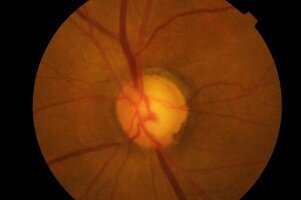One form of glaucoma, known as narrow-angle glaucoma (NAG), can cause abrupt and irreversible blindness. Less than 10% of all glaucoma diagnoses are due to narrow-angle glaucoma, yet it can still result in severe discomfort, quick vision loss, and even blindness.
The drainage angle, a part of the eye that allows fluid to regularly pass from it, can become blocked, leading to the development of this ailment, also known as “acute angle-closure glaucoma” or “closed-angle glaucoma,” which is a medical term.
A sudden, substantial increase in intraocular pressure (IOP) brought on by the accumulating fluid might result in rapid optic nerve injury.
Acute and chronic narrow-angle glaucoma are the two types.
The drainage angle suddenly narrowing is referred to as acute NAG. This type of glaucoma arises when the normal flow of aqueous humor between the iris and lens is suddenly and instantly stopped.
A constricted drainage angle is also the source of chronic NAG, although this type develops slowly and can harm the body over time without showing any immediate signs.
The majority of people will feel these signs because their ocular pressure quickly and significantly increases nausea, a headache, red eyes, eyesight haze, mild dilated pupil, halos around light, sudden extreme eye and head pain, as well as sudden loss of vision.
The best way to treat narrow-angle glaucoma is to keep your eye pressure at a safe, stable level. Eye drops and surgery are some methods for doing this.
Patients with narrow-angle glaucoma often undergo the iridotomy and iridectomy procedures.
In order to improve fluid outflow and lessen the chance of angle closure, surgeons perform an iridotomy by using a laser to make a tiny hole in the peripheral iris. To improve the fluid flow in the eyes, a little portion of the iris is removed during an iridectomy.
Awareness of narrow-angle glaucoma’s potential sudden onset and severe risk can easily cause unrest, but don’t worry. A thorough eye exam can quickly identify the condition, and there are both surgical and nonsurgical treatments available.
The first step in prevention is knowledge. If you fall under “at-risk” and it’s been a while since your last eye exam, it’s time to see your eye doctor. At the very least, you gain peace of mind. At most, you save your vision.
At The Eye Center- Dr. Mahnaz Naveed Shah & Associates our team of eight ophthalmology subspecialists/ eye specialists, eye surgeons who are considered amongst the very best eye specialists in Karachi and in Pakistan, have the diagnostic and treatment capabilities to treat from the simplest to the most complex patients. We work hard to provide our patients with the best possible medical and surgical eye care, in a state of the art purpose built eye care facility. We offer the entire array of medical, laser and surgical treatments to help provide patients the best possible care in the most efficient, safe and ethical manner.
If you need an appointment, please contact us at 03041119544 during our working hours or leave us a WhatsApp message at +923028291799 and someone will connect with you. Walk-in appointments are also available for emergencies. We can also be reached through our web portal on www.surgicaleyecenter.org


